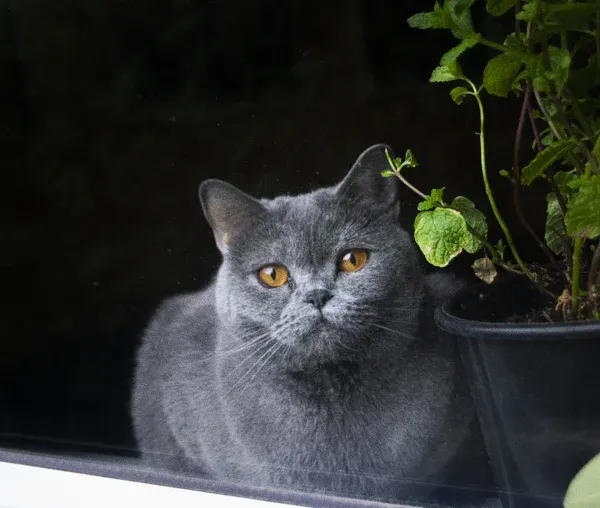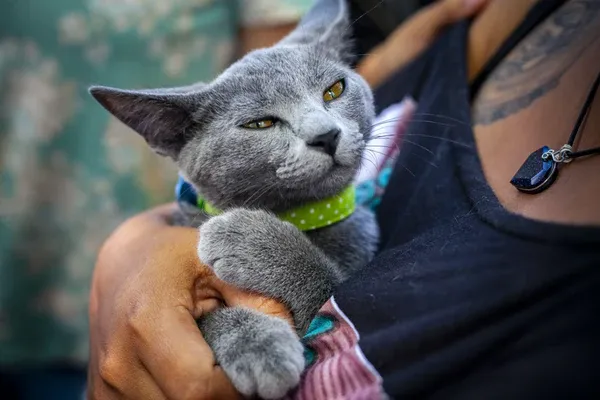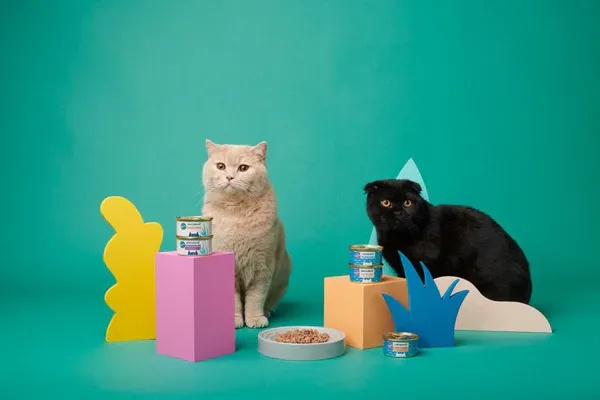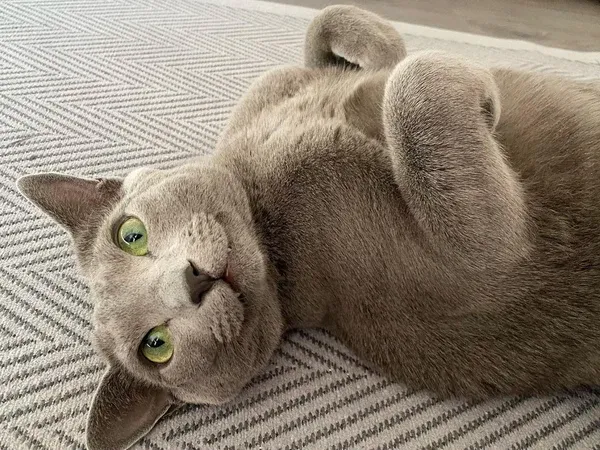If you’re a cat lover eyeing those stunning blue-grey felines, the British Blue and Russian Blue often look like twins at first glance. Both boast plush, short-haired coats in a signature bluish tint, similar body proportions, and an air of quiet elegance. But up close, the differences between British Blue and Russian Blue cats become strikingly clear. Whether you’re adopting your first grey cat breed or expanding your furry family, understanding these distinctions helps you choose the perfect companion.
These breeds appeal to Vietnamese pet owners seeking low-maintenance, affectionate cats that thrive indoors. We’ll break down their origins, appearance, personality, care needs, and more, drawing from breed standards by organizations like the Cat Fanciers’ Association (CFA) and experiences from vets specializing in feline health.
Origins of British Blue and Russian Blue Cats
Both breeds feature the diluted black gene responsible for their blue-tinged coats, but their histories diverge sharply.
Russian Blue Origins
The Russian Blue, also known as Archangel Blue or Foreign Blue, likely hails from the Archangel Isles in northern Russia. Sailors brought them to England in the late 1860s, where they gained recognition as a distinct breed by 1912. They nearly vanished during World War II, but dedicated European breeders preserved the line. Today, they’re prized for their purebred lineage and resilience.
British Blue Origins
The British Blue is a color variant of the British Shorthair (BSH), sometimes called English Shorthair or Domestic Shorthair. Historians trace BSH roots to crosses between ancient Egyptian domestic cats and European wildcats, developed in Victorian England for mousing. Over time, breeders introduced other varieties, resulting in diverse colors like blue, which dominates purebred lines—hence the “British Blue” nickname.
Coat Differences: British Blue vs Russian Blue
While both have dense, double-layered coats in shades from smoky to charcoal grey, subtle traits set them apart. Russian Blue fur feels velvety with a shimmering sheen—you can even draw patterns on it that linger. British Blue coats are firmer, often with faint tabby markings.
| Feature | Russian Blue Coat | British Blue Coat |
|---|---|---|
| Length | Extremely short | Short, slightly longer |
| Texture | Dense, shimmery blue velvet | Firm, crisp sections |
| Color Distribution | Lighter tips, solid no patterns | Even color, possible tabby stripes |
| Density | Hard to see skin when parted | Less dense |
These traits make Russian Blues appear more luminous under light.
 Close-up of grey cat eyes showing vivid green of Russian Blue versus golden of British Blue
Close-up of grey cat eyes showing vivid green of Russian Blue versus golden of British Blue
Physique: Spotting Physical Differences
Beyond coats, body structure reveals clear contrasts. Russian Blues are sleek athletes, while British Blues embody a cuddly teddy bear vibe.
| Feature | Russian Blue | British Blue |
|---|---|---|
| Body Type | Slender, angular, compact | Stocky, rounded, larger frame |
| Face Shape | Triangular/apple with prominent nose | Broad, flattened like Persians |
| Paws/Nose | Pink/mauve pads, dark nose | Grey-black pads, brick-red nose |
| Eye Color | Yellow-green at birth, vivid green | Blue as kittens, gold/copper adult |
| Weight | 3.6–6.8 kg (no sex dimorphism) | Heavier build |
| Size | Height 20–25 cm, length 38–46 cm | Height 30–46 cm, length 56–64 cm |
Russian Blues suit active homes; British Blues offer a more robust presence.
Temperament: Personality Traits Compared
Both breeds are introverted, dog- and kid-friendly, and moderately playful, ranking among calm cat breeds. Yet nuances emerge.
British Blues (often ISTJ types) are loyal, trainable, and independent. They enjoy solo naps and tolerate alone time well, though kittens may scratch furniture if bored—provide sturdy posts.
 Curious grey cat peering through window, embodying independent playfulness
Curious grey cat peering through window, embodying independent playfulness
Russian Blues (INFJ-like) are observant empaths, mirroring your mood. They crave interactive play like fetch and bond deeply with one person, needing mental stimulation to avoid distress.
Choosing Between Them: Busy schedules? Pick a British Blue for self-sufficiency. More interactive time? A Russian Blue thrives on engagement. Note: Russian Blues produce less Fel d 1 allergen, ideal for mild allergies—though no breed is fully shedless.
Grooming and Care Needs
Care is straightforward for these short haired cat breeds, with low shedding.
- Brushing: 1–2 times weekly; more in shedding seasons (spring/autumn).
- Bathing: Monthly if needed—most dislike water.
- Dental: Daily or weekly brushing.
- Nails: Trim every 1–2 weeks.
Lifespan: 12–20 years. Regular vet check-ups prevent issues.
 Affectionate grey cat ready for cuddles, highlighting grooming-friendly coat
Affectionate grey cat ready for cuddles, highlighting grooming-friendly coat
Common Health Issues
Senior cats (post-8 years) may face breed-specific concerns—early detection via vets is key.
| Russian Blue | British Blue |
|---|---|
| Hyperthyroidism, kidney disease, diabetes, obesity, hip dysplasia | HCM, artery issues, PKD, cataracts, breathing problems |
Monitor weight and diet to mitigate risks.
Optimal Nutrition for Longevity
A high-protein (50%+), meat-based diet supports muscle tone, immunity, and coat health—essential for these active yet prone-to-obesity breeds among healthy cat breeds. Prioritize wet food with whole chicken, turkey, salmon, or tuna for hydration and taurine. Avoid grains, derivatives, or fillers; they lack bioavailability.
Feed per age/weight charts: Kittens need frequent meals; adults 2–3 daily. Supplements like omega-3 aid joints and skin.
 Variety of fresh meat-based cat foods appealing to blue-coated breeds
Variety of fresh meat-based cat foods appealing to blue-coated breeds
Consult vets for tailored plans, especially for seniors or health risks.
 Excited cat inspecting premium wet food options
Excited cat inspecting premium wet food options
Life Stage Feeding and Benefits
Quality nutrition yields quick wins: better digestion in week one, glossy coats and stable energy by months two-four, and peak vitality after six. Transition gradually over 7–10 days.
 Vibrant blue-toned cat enjoying nutrient-rich meal
Vibrant blue-toned cat enjoying nutrient-rich meal
Final Thoughts: British Blue or Russian Blue?
British Blues offer sturdy independence; Russian Blues deliver empathetic companionship. Either enhances your home with their blue beauty and gentle nature. Match to your lifestyle, prioritize vet-approved care, and enjoy years of purring joy.
Ready for more? Explore similar blue felines or consult a local vet in Vietnam for breed-specific advice.
 Anticipating mealtime with enthusiasm, doorbell signaling fresh delivery
Anticipating mealtime with enthusiasm, doorbell signaling fresh delivery
References
- Cat Fanciers’ Association (CFA): Russian Blue Breed Standard
- The International Cat Association (TICA): British Shorthair profiles
- Veterinary insights from AVMA on feline nutrition and health
